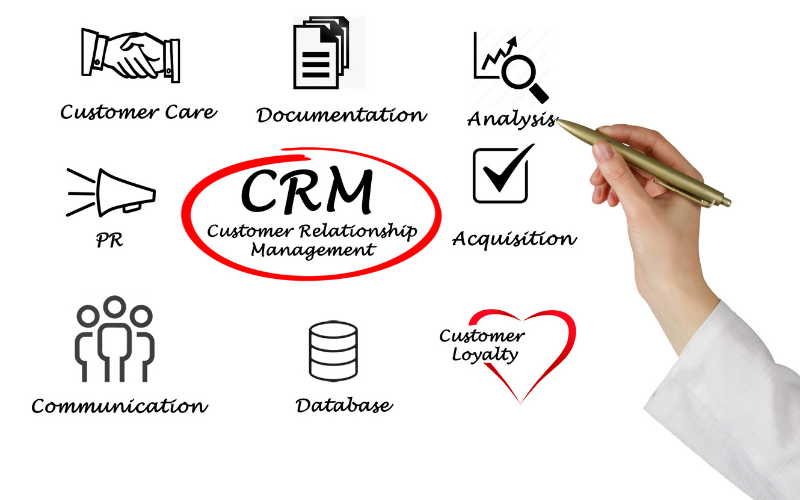The Power of Follow-Ups
paul lloyd • June 13, 2022
With over 30 years of Sales experience one thing I know for sure is that everyone has an opinion on what’s right and wrong re: follow up. Another thing I know is that data and stats are your friends and as a Sales expert you should rely on them to inform and educate you at every stage of the Sales process.
Some sales stats to astonish you (source unknown)...
- 48% of Salespeople never follow up with a prospect
- 25% of people make a second contact and stop
- 12% of people only make three contacts and stop
- Only 10% of people make more than three contacts
- 2% of sales are made on the first contact
- 3% of sales are made on the second contact
- 5% of sales are made on the third contact
- 10% of sales are made on the fourth contact
- 80% of sales are made on the fifth to twelfth contact
Yes, you read this right, a staggering
48%
of Salespeople give up after the first attempt…
And 80% of sales are made on the 5th – 12th contact…
So why don’t we follow up if we can achieve 80% of Sales with ongoing contacts?
The reasons can be varied, they can be personal
i.e., the fear of rejection, lack of confidence, or more inherent issues in an organisation
i.e., no sales process or lack of a sales system.
Only 10% of people make more than three contacts...
I’m betting these 10% of people have a good and experienced “Sales” mindset. This isn’t anything magical or special, just a way of using the Sales tools / automations at your disposal and having an open-minded, positive mindset and the ability to judge, gauge and read people and situations, which most Sales people are inherently good at anyway.
So, what do you do when you connect with a prospect and they're interested, it’s definitely an active lead, yet after sending a great proposal you hear nothing, and then after a further 2-3 emails, calls, messages nothing is happening and still zero reply?
The key is to not take it personally, it may be that they aren’t interested in your proposal, and that’s ok, but it may be that any of the standard reasons DO apply;
• A decision-maker is on holiday / off-sick
• They are waiting on a new hire
• Too busy
• Significant internal HR / financial issue taking precedence
Either way, what I find is best is to just try one more time, as you just need
one thing from them, an answer, be it negative or positive, it’s just that one thing, and it’s that simple. You keep trying just one more time until you get that one answer.
Other than a few minutes of your time, you’ve nothing else to lose.
How should I follow up? What method works best?
Email
1. Email marketing has a 2x higher ROI
than cold calling or trade events
2. 33% of recipients open an email because of a subject line
3. 64% of people make spelling / grammatical errors in their emails, so it's important to do a grammar check
on them before sending
4. Including the prospects first name
in the subject line can boost open rates by 29.3%
Phone calls
1. 55% of high growth companies stated that cold calling
is very much alive
2. One study showed that phone calls out-converted emails
by a significant margin – 8.21% vs 0.03%
3. The average salesperson makes 52
calls a day
4. The average response rate for a voicemail is 4.8%
5. 80% of calls go to voicemail. 90% of first-time voicemails are never returned
Texting
1. Prospects who are sent text messages have a 40% higher conversion rate
than those who don’t receive texts
2. Texts are better used as a follow-up than an initial point of contact. Texting before having had a phone conversation decreases the likelihood
of the prospect ever becoming a lead
3. Texting someone after having made contact leads to a 112.6% higher lead
to engagement conversion
Social media
1. Sales reps who are active on social media get 45% more sales opportunities
than those who aren’t
2. Sales reps that use social media as a sales channel are 51% more likely to hit their sales quota
than those who don’t
3. 98% of sales reps with more than 5,000 LinkedIn connections
meet or surpass their quota
4. 78% of salespeople
who use social media perform better than their peers
The above information and stats are courtesy of IRC Sales Solutions.
Thanks for reading,
Paul Lloyd, Sellerly.
MSP/ VAR Sales Problem Solver,
Sales Management Mentor
P.S Did you know I’m a passionate bee enthusiast and keeper? Here’s your bee fact of the month;
"Since 1900, the UK has lost 13 species of bee, and a further 35 are considered under threat of extinction. None are protected by law. "

Have you ever lost a client without even knowing they were looking around? For even the most “on the ball” Salesperson this is probably a very real reality. You lose clients without knowing they were looking . Less than 4% of your customers will tell you if they are unhappy so you may never know if you have a customer on the fence. There is something very British about not complaining about poor service, so here we take a look at the r easons why your customers may leave and change to another competitor.

Stages 3 - 4 - Beginning to Scale Up to Scaling Out So, in the last article, we looked at the two “starter” stages for a Sales business when it becomes successful and starts growing. Now we look at the pivotal maturing stages entitled loosely Beginnings of Scaling and Scale-Out. These stages occur when a f ew key things are met/achieved , usually, the business has an increasing number of teams and key sales roles in the organisation, 3-10+ Account Executives, multiple Sales Reps, and a growing Management team . Have a look below at the infographic and see where your organisation is measuring up. Where do you fit? How Sales Mature and Excellent are you / your organisation?

Stages 1 -2 - From a Founder Seller to a Small Sales Team So, congratulations, your Sales business is successful and growing, but is it maturing? Sales planning, whether at a company, department, or team level, is necessary for hitting targets and providing a framework for the whole business to strive towards, but do you know where you are in your Sales Maturity? A sales skills maturity model helps you evaluate your current sales skills and identify the areas that need improvement. Everyone needs a plan in their life, and anyone in Sales DEFINITELY needs a plan so we’ve put together this Infographic that details out the stages and milestones an organisation n eeds to typically follow to progress to Sales Excellence and Maturity . It’s a lot of information so we’ve focussed this week on Stages 1 and 2 only – Founder Seller to Small Sales Team , and our next blog will focus on Stages 3 and 4 – Beginnings of Scaling Up and Scale Out. Where do you fit? How Sales Mature and Excellent are you / your organisation?

Where are those New Clients? Over recent years I have spent a lot of time meeting and working with Managed Service Providers / VARs, and when discussing the biggest challenges in their business, it always comes back to the same thing over and over. WINNING NEW CUSTOMERS. This is a challenge that seems to affect any company of any size , whether their turnover is £500k or £40m. They need to win new contracts and new customers. Most of these businesses have reached the level that they have through recommendations and referrals or in the case of the bigger ones some acquisitions as well, rarely it seems going out and actively generating an opportunity and a sale.

Every company needs to do a sales forecast, whether weekly, monthly, or quarterly. Sales forecasts are an essential requirement for all stakeholders. Forecasting is a fundamental tool for businesses to plan, strategize, and make informed decisions. It helps them estimate future revenue, set goals, make informed business decisions, manage inventory, and supply chain, and improve cash flow management A good forecast means no surprises in store, funds in the bank and stock in the warehouse . Healthy forecasts protect companies from tough competitive and market conditions and position them better to adapt, plan, and thrive in the present and future. Based on current industry data and research, it seems most Sales leaders lack confidence in their forecasts, as well as the expertise to improve them. Disorganised and non-formal forecasting processes are a likely culprit. 93% of sales leaders are unable to forecast revenue within 5% , even with two weeks left in the quarter. 67% of organizations lack a formalized approach to forecasting altogether. 80% of sales organisations DO NOT have a forecast accuracy of greater than 75% . 55% of sales leaders do not have high confidence in their forecasting accuracy. (Stats from CSO Insights and Gartner)

A Trusted Advisor in the MSP market space is aiming for a long-term relationship, not short-term gain, and not to be seen as just a vendor, or worse still, the IT guy! So surely all TSP/MSPs want to be seen as trusted advisors to their clients, with the obvious benefits of repeat business, referrals, and introductions to your client’s other professional advisors. You do not need to “sell” your products or expertise when you are the Trusted Advisor. But have you put the time and effort in to be able to understand their business and what they are looking to achieve? Are you a true Trusted Advisor?

What is Lead Gen? “Lead Generation”, or “Lead Gen” for short, is the process of identifying and cultivating potential customers for a business's products or services. It is essential for businesses as it can turn interested parties into paying customers which in turn helps to create a stable customer base and drive sales, this then creates an ongoing cycle where customers give good reviews, which in turn results in customer loyalty and new business from that. Lead Gen also allows for a better understanding of a company's key customers and target markets, their needs and preferences thus allowing for more personalisation of products, services and marketing communications.



